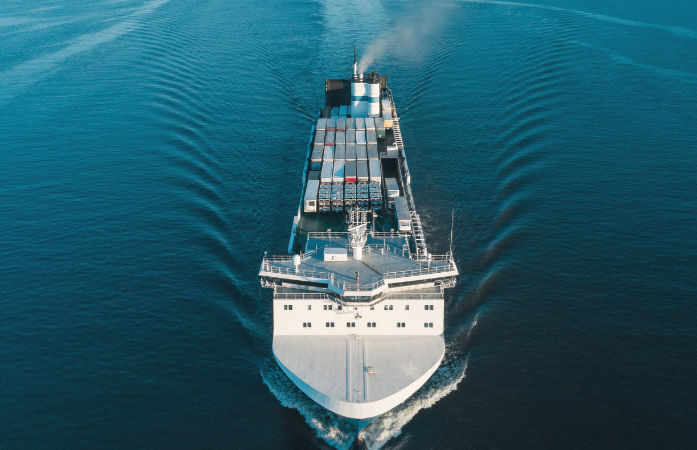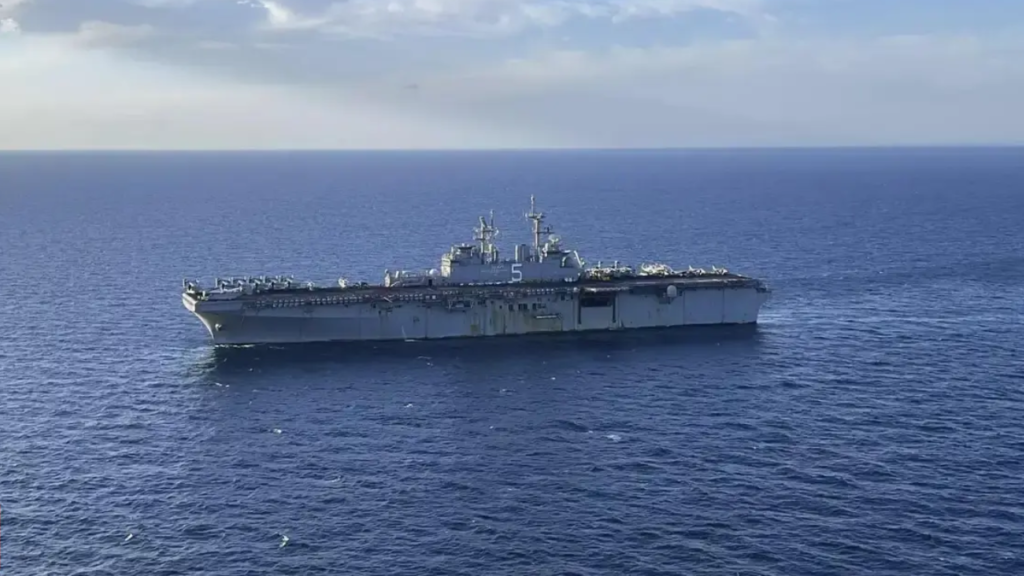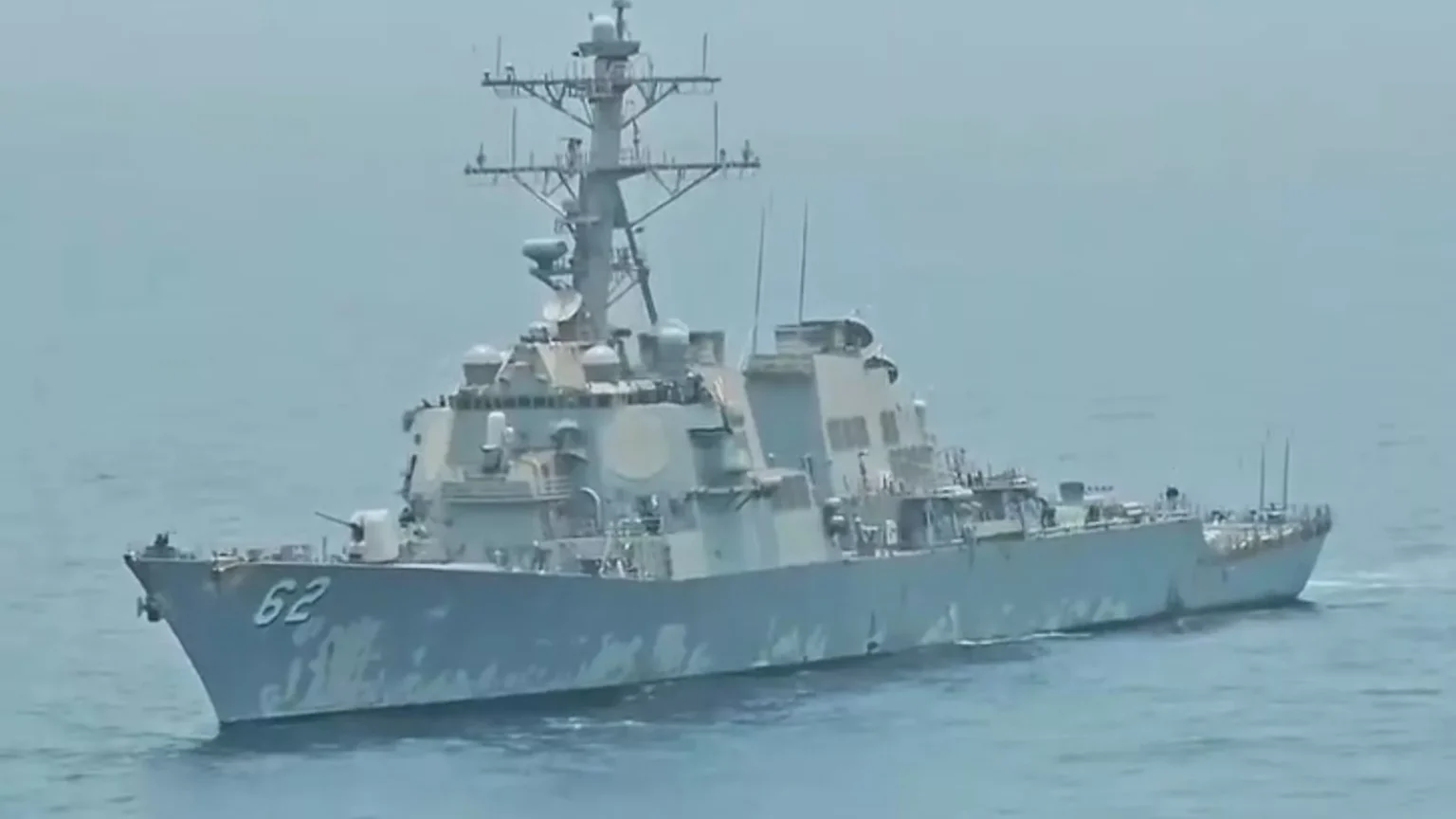The Iran US Navy confrontation in the Gulf of Oman has escalated tensions between Tehran and Washington. According to Iranian state media, a serious incident occurred involving an Iranian naval vessel and a US Navy destroyer. The encounter, which reportedly happened in international waters, is being described as dangerous and provocative. This new development could once again raise concerns about maritime security and political stability in the region.
This article covers five alarming details from the confrontation, its background, and the global response to this ongoing geopolitical friction.
What Happened in the Gulf of Oman?
On July 21, 2025, Iran’s state media reported that a confrontation occurred between an Iranian Navy vessel and a US Navy destroyer in the Gulf of Oman. According to Iranian sources, the Iranian patrol vessel issued a warning to the US ship, claiming it had approached Iranian waters.
In contrast, the US Navy has not confirmed any violation of international maritime rules. Pentagon officials, when asked, stated that all US Navy activities were conducted in accordance with international law and in international waters.
The Iran US Navy confrontation reportedly lasted several minutes. Iranian sources stated that after warnings were issued, the US destroyer changed course and the situation de-escalated. However, both sides appear to hold different views about the incident’s seriousness.

Tensions Rising Again After Years of Stand-Offs
This is not the first Iran US Navy confrontation in the Gulf region. The Strait of Hormuz and the Gulf of Oman have long been flashpoints between the two countries. In previous years, similar encounters have led to international condemnation, diplomatic complaints, and even near-military escalations.
The Gulf of Oman is a strategically critical waterway that connects to the Strait of Hormuz—a vital route for global oil shipments. Any tension in this area affects international energy markets and raises the threat of armed conflict.
Recent events suggest that diplomatic relations between Iran and the United States remain fragile, despite international efforts to maintain peace.
Tehran Accuses US of “Provocative Navigation”
According to Rear Admiral Shahram Irani, commander of Iran’s navy, the US destroyer came dangerously close to Iranian territorial waters. He claimed that the US vessel was performing “provocative navigation” maneuvers, which forced the Iranian patrol ship to intervene.
Iranian media released limited footage of the encounter, showing Iranian naval personnel communicating via radio and issuing warnings to the US ship. They assert that the warning was successful in repelling the violation.
Iran has often accused the US of violating its sovereignty in the Persian Gulf and nearby waters. This time, the Iran US Navy confrontation could become a major diplomatic issue, especially as both sides share very different accounts of the incident.
US Navy Maintains Right to International Navigation
From Washington’s side, officials deny any wrongdoing. A spokesperson for the US 5th Fleet, stationed in Bahrain, stated that the destroyer was conducting routine maritime patrols and did not enter Iranian waters.
The US has always emphasized freedom of navigation in international waters. According to the United Nations Convention on the Law of the Sea (UNCLOS), vessels are allowed to pass through territorial seas under certain conditions. However, Iran views foreign military presence near its coast as a threat.
The Iran US Navy confrontation in the Gulf of Oman, therefore, reflects a long-standing disagreement on how these waters are to be used.
International Community Calls for Calm
Following reports of the confrontation, several nations and organizations have urged both Iran and the US to exercise restraint and avoid escalation.
The United Nations Secretary-General issued a statement calling for diplomatic dialogue and respect for maritime laws. Similarly, the European Union urged both sides to de-escalate tensions and avoid actions that could provoke armed conflict.
With the Red Sea and Gulf regions already facing instability from other regional conflicts, the international community is watching the Iran US Navy confrontation closely.
Risks to Global Shipping and Energy Supply
Perhaps the most concerning aspect of the Iran US Navy confrontation is its impact on global trade. The Gulf of Oman is one of the busiest shipping lanes in the world. Around 20% of the world’s oil passes through the nearby Strait of Hormuz.
Any military tension in this area increases the risk to commercial vessels, disrupts energy supply chains, and raises insurance premiums for maritime transport.
In the past, such tensions have resulted in attacks on oil tankers, mining of shipping lanes, and increased military presence from various countries. Though the recent confrontation did not escalate to violence, the threat to international trade remains real.
History of Iran US Naval Confrontations
The Iran US Navy confrontation is part of a long history of disputes in the region. Since the 1980s, Iran and the US have had multiple encounters at sea. Some resulted in military skirmishes, such as Operation Praying Mantis in 1988, where the US Navy sank several Iranian vessels.
In recent years, these confrontations have taken the form of:
- Close passes by Iranian boats near US warships
- Warning shots fired by US vessels
- Drone interceptions and maritime seizures
The recurring nature of these events shows how easily routine patrols can escalate into dangerous encounters if not handled carefully.

What Happens Next?
The aftermath of the recent Iran US Navy confrontation depends on how both sides handle the situation. If both nations choose dialogue and diplomacy, tensions could ease. However, if either side uses the incident for political gain, the region could become more unstable.
Some analysts believe Iran may be using these incidents to show strength in the face of international sanctions and domestic unrest. Meanwhile, the US might increase its naval patrols in the region to reaffirm its commitment to free navigation.
Either way, the risk of a serious clash remains high if clear rules of engagement and communication are not followed.
Statements from Analysts and Experts
Experts on international relations and maritime security have weighed in on the latest incident. Dr. Samuel Monroe, a professor of Middle East Affairs, stated:
“The Iran US Navy confrontation shows how fragile peace is in these waters. Miscommunication or misjudgment could lead to unintended consequences.”
Maritime analyst Anisa Rahimi commented:
“Iran wants to show it can control its waters. The US wants to show it can patrol freely. Both objectives clash, and that’s dangerous.”
Conclusion: Why This Matters to the World
The recent Iran US Navy confrontation is more than just a regional issue. It highlights the ongoing rivalry between two powerful nations in a strategic area. Any future escalation could:
- Disrupt global oil supplies
- Increase military activity in already tense waters
- Harm diplomatic efforts in the Middle East
- Endanger civilian shipping vessels
As such, the incident demands global attention and a serious effort by both parties to avoid further military encounters.
Do follow Gulf Magazine on Instagram
Also Read – The Arc Yiti: 5 Powerful Ways It Redefines Sustainable Living



